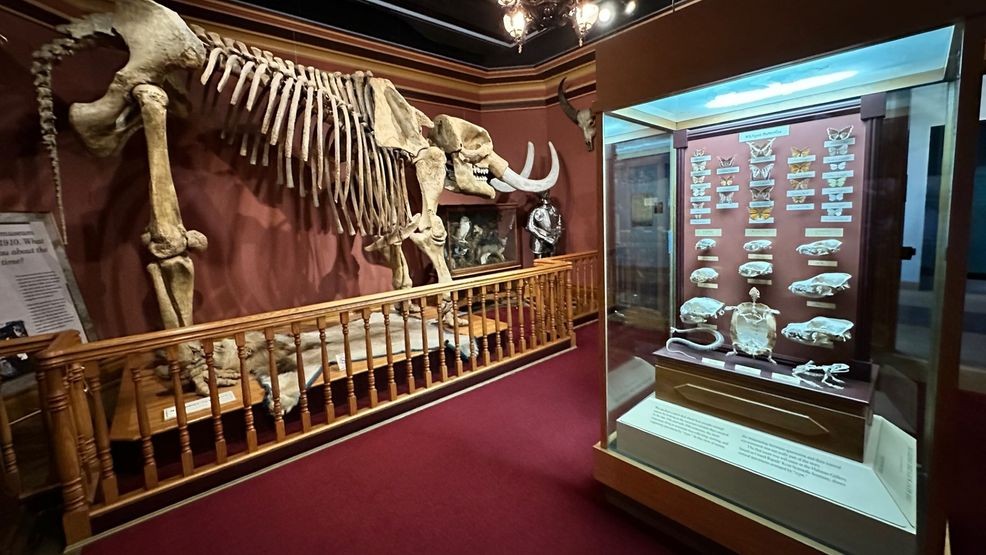Extinct Prehistoric Predators Resurrected: How Scientists Are Bringing Dire Wolves Back From the Shadows
Science
2025-04-08 20:27:13Content

Did We Learn Nothing from Jurassic Park?
In the realm of scientific ambition, humanity seems perpetually drawn to pushing boundaries, often without fully considering the potential consequences. The iconic film "Jurassic Park" wasn't just a thrilling blockbuster—it was a cautionary tale about the dangerous intersection of technological capability and ethical restraint.
Despite the movie's clear warning about the risks of genetic resurrection, modern scientists continue to explore the tantalizing possibility of reviving extinct species. The woolly mammoth, passenger pigeon, and even the Tasmanian tiger have become potential candidates for de-extinction, raising profound questions about our right to manipulate nature.
While the technological advances are undeniably impressive, we must pause and ask: Just because we can do something, does that mean we should? The lessons from Jurassic Park remain startlingly relevant—complex ecosystems aren't puzzle pieces to be casually rearranged, and the unintended consequences of our scientific hubris can be catastrophic.
As we stand on the precipice of potentially resurrecting long-lost species, we would be wise to remember Dr. Ian Malcolm's prophetic words: "Your scientists were so preoccupied with whether they could, they didn't stop to think if they should."
Resurrecting Prehistoric Predators: The Shocking Science Behind Dire Wolf Revival
In the ever-evolving landscape of scientific innovation, researchers are pushing the boundaries of genetic reconstruction, challenging our understanding of extinction and biological resurrection. The potential revival of dire wolves represents a groundbreaking intersection of advanced genetic technologies, paleontological research, and ethical scientific exploration.When Extinct Meets Cutting-Edge: A Scientific Breakthrough That Challenges Imagination
The Genetic Resurrection Phenomenon
Modern genetic research has unveiled unprecedented capabilities in reconstructing extinct species' genetic blueprints. Scientists are now employing sophisticated DNA sequencing techniques to map the complete genomic structure of dire wolves, those legendary prehistoric predators that once roamed North American landscapes. By extracting fragmented genetic material from preserved fossil remains, researchers can now potentially recreate genetic profiles that have been dormant for thousands of years. The complexity of this process involves intricate molecular manipulation, requiring advanced computational algorithms and precise genetic engineering techniques. Researchers must navigate challenging genetic reconstruction challenges, including degraded DNA fragments and potential contamination risks.Paleogenetic Challenges and Technological Innovations
Reconstructing extinct species' genetic codes presents extraordinary scientific challenges. Dire wolf DNA preservation requires meticulous extraction methods, utilizing cutting-edge technologies that can reconstruct genetic sequences from microscopic biological fragments. Advanced machine learning algorithms help scientists predict potential genetic variations and reconstruct missing genetic segments. Interdisciplinary teams comprising geneticists, paleontologists, and computational biologists collaborate to decode these prehistoric genetic mysteries. Their work represents a remarkable convergence of multiple scientific disciplines, pushing the boundaries of what was previously considered impossible.Ethical Considerations and Scientific Implications
The potential resurrection of dire wolves raises profound ethical and ecological questions. While scientific capabilities continue expanding, researchers must carefully consider the broader implications of reintroducing extinct species into contemporary ecosystems. Complex environmental interactions, potential disruptions to existing ecological balances, and unforeseen consequences demand rigorous scientific scrutiny. Ethical debates surrounding genetic resurrection explore fundamental questions about humanity's role in manipulating biological systems. Scientists must balance technological capabilities with responsible ecological stewardship, ensuring that potential species resurrections do not create unintended environmental consequences.Technological Breakthroughs in Genetic Reconstruction
Cutting-edge genetic technologies have transformed our understanding of biological reconstruction. CRISPR gene-editing techniques, advanced sequencing methodologies, and sophisticated computational modeling enable researchers to approach genetic resurrection with unprecedented precision. These technological innovations represent more than mere scientific curiosities; they symbolize humanity's expanding capabilities to understand and potentially manipulate complex biological systems. The dire wolf reconstruction project serves as a compelling case study in the broader landscape of genetic research and technological innovation.Future Perspectives and Scientific Horizons
The potential resurrection of dire wolves represents just one fascinating chapter in humanity's ongoing scientific exploration. As genetic technologies continue advancing, researchers anticipate increasingly sophisticated capabilities in reconstructing and potentially reintroducing extinct species. This groundbreaking research challenges traditional boundaries between past and present, offering tantalizing glimpses into potential future scientific achievements. While numerous challenges remain, the dire wolf reconstruction project symbolizes humanity's relentless pursuit of knowledge and understanding.RELATED NEWS

Cutting-Edge Science Comes Alive: Students Dive Deep at Annual Health Expo

Breaking Barriers: How Next-Gen Learning is Revolutionizing STEM Education






